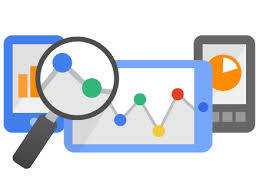As a quick recap, embedded analytics generally means including consumer-facing BI and analytics tools within a separate application, as part of the native application itself rather than a separate platform (if you want to learn more about this, you can check out the beginner’s guide to embedded data analytics, or discover why we think the build vs buy debate on this issue is pointless).
As a quick recap, embedded analytics generally means including consumer-facing BI and analytics tools within a separate application, as part of the native application itself rather than a separate platform (if you want to learn more about this, you can check out the beginner’s guide to embedded data analytics, or discover why we think the build vs buy debate on this issue is pointless). This carries many potential benefits for the developer in terms of providing a stronger value proposition, an edge over the competition, or the possibility of selling the analytical module as a premium service. However, as mentioned, in this article, I would like to focus on the UX aspects.
“Perhaps the most straightforward way in which application developers are currently modifying UX with embedded analytics is by presenting dashboards to consumers rather than business users,” says Daniel Harris of Software Advice, a company that hosts reviews of business analytics tools. “In some deployments, the same analytics that feeds applications for business users also feed dashboards that allow consumers to monitor health, expenses, energy usage at home etc. With the progressive increase in the speed of analytics due to the evolution of in-memory computing technologies, new opportunities are arising for embedding real-time analytics in mobile games and other consumer apps. For instance, real-time analytics can change the rules of a mobile game in response to the player’s actions in order to enhance engagement or apps can display promotional offers in real time in response to consumer behavior.”
It Gives Your Users What They Want
The first thing that’s important to realize is that your audience is hungry for data. Today’s users should be assumed to be both data driven and data savvy – i.e., to understand the machinations of data and to use it to drive and support their decisions.
This is especially true in the business world, across departments: similarly to the changes in marketing technology that have given modern marketers access to troves of consumer data which might have been unimaginable a decade or two ago, and consequently changed the way they work and the required skills they possess, modern data analytics tools are creating a similar change in purchasing, supply chain, sales, human resources and many other business units.
Essentially this means that if your application has data, your users want access to it. They want to dive into it and find relevant the information or insights that will help them make better decisions in their job, financial activities or personal lives. If you don’t give them the possibility to do so effectively within your own app, they will export the data and use other tools. Whereas when the analytical platform is embedded within your own application, you are providing a breadth of functionality that your users are looking for and making it immediately available – significantly experience the overall usability and value of your product.
Which leads us to the next benefit of embedded analytics in terms of UX design…
Avoiding the Context Switch
If you haven’t implemented embedded BI or reporting capabilities, your users need to open an entirely different application in order to access the data. This means the users need to switch context between using the application and analyzing the data, which creates a more awkward user experience (the user stops what she is currently doing, waits for the other app to load, needs to log in, load the data, etc.)
While this might not seem like a huge deal to some, it is these tiny annoyances that can ultimately damage user experience and satisfaction with a product. The ability to offer visual analytics and data exploration seamlessly within the original application removes this clunkiness.
The advantages of avoiding context switching are particularly relevant in industries where end-users need to constantly have their eye on the data. Mr. Harris of Software Advice says that “consumer-facing examples of embedded analytics are most frequently found in telecommunications and banking/financial services, as consumers have a real need to monitor usage, account balances etc. in these areas of their lives. For instance, dashboards can be used to visualize data usage on mobile devices or remaining funds in an account. Such applications are extending into the utilities vertical as well. The evolution of the Internet of Things will, of course, open up many new possibilities for embedding analytics in consumer apps.”
Broadening Access to Deep Analytical Insights
While this is not strictly a design issue, it nevertheless affects the overall experience of customers interacting with your application and thus could be considered part of UX in a broader sense.
As the business intelligence landscape is evolving, developers are beginning to realize the advantages of using embedded analytics to do more than merely provide a visual interface for interacting with data but can actually help users perform advanced analysis of highly complex data from many disparate sources.
“Currently, embedded analytics are helping consumers to quantify their activities in ways that have never before been seen. However, many deployments still focus on dashboards and visualization”, notes Harris. “The future of embedded analytics lies in the continuing evolution of real-time, predictive analytics and the application of such analytics to novel data sources: IoT data, video data, geolocation data etc. As analytics are increasingly embedded under the hood of consumer apps rather than as a visualization layer for consumer data, UX will evolve to respond to the needs of the consumer in real-time, instead of waiting months or years for a product upgrade. This development will have an even more dramatic impact on UX than mobile devices had in the first decade of the 21st century.”
I would that by giving end-users the ability to leverage these types of advanced capabilities and insights, within the application itself (and in many cases “invisibly”, with the end user being exposed only to the results of automated analytical processes), you are not only enhancing the value your product delivers, but also saving your users the anguish they would likely experience trying to grapple with this data separately. However, that is not the crux of this article. If you’re interested, you can read an in-depth discussion of the challenges posed by complex data here in our whitepaper.








